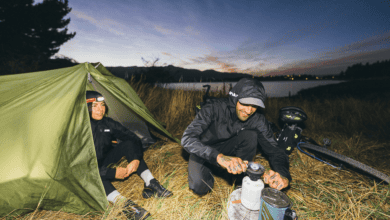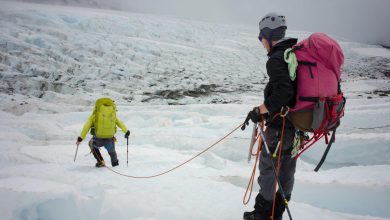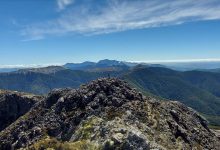
Brace yourself because what you’re about to read will make your blood boil. It seems the government’s priorities aren’t to increase the abundance in our coastal waters but to risk it all by putting commercial interests above everything else.
Despite laws that are supposed to prioritise the health of our marine ecosystems and grant Kiwis reasonable access to our seafood, recent actions by Fisheries New Zealand suggest that commercial fishing interests are more important than preserving our coastal fisheries. If you thought casting a line and bringing home dinner was secure for the future, think again.
Alarming developments that not only jeopardise our ability to catch our own seafood but also endanger the very future of our marine ecosystems.
In a 2024 report by FNZ, they claim that recent camera-based survey methods have a 100% efficiency in detecting scallops, while dredge surveys lag significantly at around 70% plus it damages the seabed. Results from NIWA’s most recent camera-based survey suggest even fewer juvenile scallops compared to previous surveys – indicating a slow rebuild.
Yet, despite overwhelming evidence and strong community support, FNZ is once again bowing to commercial interests and conducting a destructive dredge survey—the very method that helped decimate our scallop fishery. All under the guise of science, no less. It’s infuriating.
But wait, there’s more…
Destructive dredging in the Coromandel scallop fishery
In the name of “science,” Fisheries New Zealand (FNZ) has once again authorised researchers to drag those destructive Victorian box dredges through the Coromandel scallop beds.

This move tramples all over four years of community-led conservation efforts and risks spreading the invasive seaweed Caulerpa throughout Coromandel waters. This scallop fishery has already been so depleted it was closed in 2023. Have they learnt nothing?

For decades, the relentless use of scallop dredges has wreaked havoc – decimating vital habitats, other marine life, and the scallops themselves. Back in May, a multi-stakeholder working group – chaired by none other than FNZ themselves – agreed that camera surveys were the way forward, especially since scallop populations in East Northland, Hauraki Gulf, Coromandel, and Bay of Plenty are too low to sustain any harvest. Common sense, right?

Hauraki Gulf Marine Protection Bill update: Public fishing excluded, commercial fishing allowed
In an equally mind-boggling move, last-minute changes to the Hauraki Gulf Marine Protection Bill will allow some forms of commercial fishing in selected High Protection Areas (HPAs). Yes, you read that right – exclusive zones for commercial and Māori customary fishing, but public fishing is off the table.
While we’re left shaking our heads at this appalling decision, it’s clear that this is just a distraction from the real issue – a complete failure of fisheries management. The real problems – including overharvesting and the ongoing use of destructive fishing techniques that have contributed to the Gulf’s depletion but have not been resolved. Allowing different rules for different stakeholders inside HPAs defeats the purpose of their establishment and will undoubtedly further reduce biodiversity and create social conflict.
The process of developing a plan to restore the abundance of the Hauraki Gulf Marine Park started over a decade ago.. Yet ten years later, bottom trawling is still allowed in the Marine Park, and commercial fishing will now be allowed in the proposed HPAs.
The Minister for Oceans and Fisheries, Shane Jones, assures us they’ll only be “ring netting” in the HPAs, which, alongside the claim of “providing essential protein for Māori and Pacific Island communities in South Auckland,” is their PR team working overtime. With over 80% of all commercially harvested fish being exported, this is a well-constructed spin
It’s absurd that a Marine Park is now being manipulated to deny the public access to its own food basket, especially during a cost-of-living crisis. Contrary to the Minister of Conservation’s claims, they’re marginalising the public’s role in conservation and eroding our faith in both FNZ and the government to do right by New Zealanders.
Meanwhile, through The Kai Ika Project, we’ve worked with the South Auckland community to share over 500,000 kg of fish heads and frames in the last five years. We’re out there every week distributing kaimoana and other food to an appreciative community. Best of all, we haven’t harvested any more fish – we’re making the most of every fish caught. Waste not, want not.

What can you do to help?
It’s downright alarming that the government seems willing to do anything to fill its coffers, regardless of the long-term health of our oceans and the people who rely on the sea’s bounty. This behaviour isn’t just concerning – it’s unacceptable.
We can’t sit back and watch this happen. Tackling a failing fisheries management system takes time, effort, and yes, resources and we need your help to fight this battle.
Here’s how you can help:
1. Send a message to the Prime Minister Chris Luxon
Use our nifty form to send a pre-written message expressing your outrage to the PM, or to write your own.
2. Please consider donating to LegaSea. Become a LegaSea Legend.
Together, we can stand up against this madness and protect our coastal fisheries for future generations.
Supplied by Legasea – supported by Adventure Magazine








